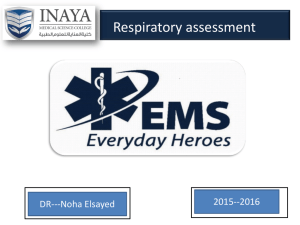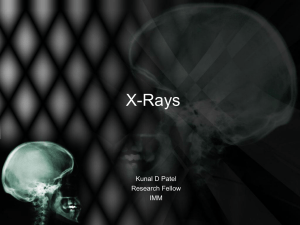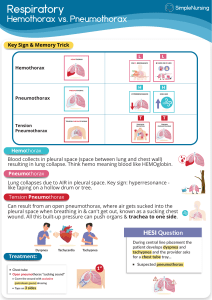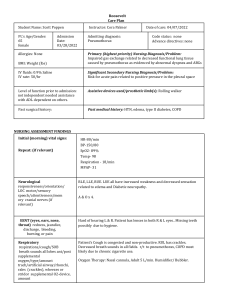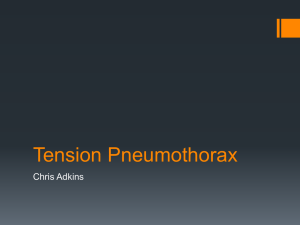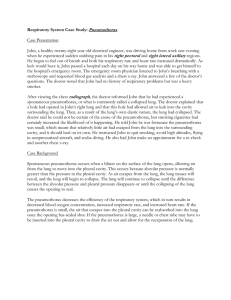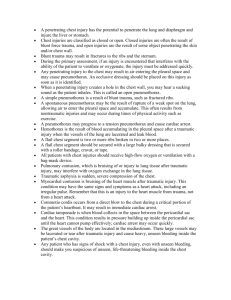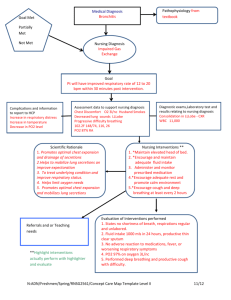Pneumothorax Case Study
advertisement
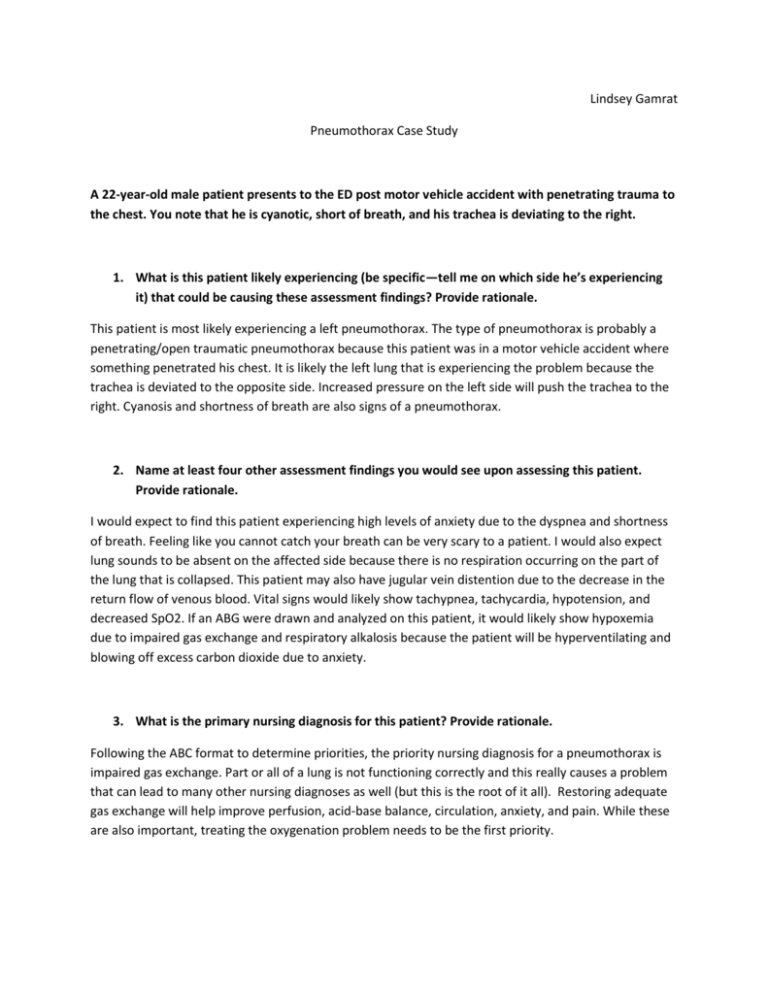
Lindsey Gamrat Pneumothorax Case Study A 22-year-old male patient presents to the ED post motor vehicle accident with penetrating trauma to the chest. You note that he is cyanotic, short of breath, and his trachea is deviating to the right. 1. What is this patient likely experiencing (be specific—tell me on which side he’s experiencing it) that could be causing these assessment findings? Provide rationale. This patient is most likely experiencing a left pneumothorax. The type of pneumothorax is probably a penetrating/open traumatic pneumothorax because this patient was in a motor vehicle accident where something penetrated his chest. It is likely the left lung that is experiencing the problem because the trachea is deviated to the opposite side. Increased pressure on the left side will push the trachea to the right. Cyanosis and shortness of breath are also signs of a pneumothorax. 2. Name at least four other assessment findings you would see upon assessing this patient. Provide rationale. I would expect to find this patient experiencing high levels of anxiety due to the dyspnea and shortness of breath. Feeling like you cannot catch your breath can be very scary to a patient. I would also expect lung sounds to be absent on the affected side because there is no respiration occurring on the part of the lung that is collapsed. This patient may also have jugular vein distention due to the decrease in the return flow of venous blood. Vital signs would likely show tachypnea, tachycardia, hypotension, and decreased SpO2. If an ABG were drawn and analyzed on this patient, it would likely show hypoxemia due to impaired gas exchange and respiratory alkalosis because the patient will be hyperventilating and blowing off excess carbon dioxide due to anxiety. 3. What is the primary nursing diagnosis for this patient? Provide rationale. Following the ABC format to determine priorities, the priority nursing diagnosis for a pneumothorax is impaired gas exchange. Part or all of a lung is not functioning correctly and this really causes a problem that can lead to many other nursing diagnoses as well (but this is the root of it all). Restoring adequate gas exchange will help improve perfusion, acid-base balance, circulation, anxiety, and pain. While these are also important, treating the oxygenation problem needs to be the first priority. 4. What nursing and medical interventions do you anticipate this patient receiving? Medical interventions that I would anticipate this patient receiving would be a needle decompression and/or chest tube insertion. These are needed to reduce pressure and allow the pressure in the pleural cavity to return to normal so that the lung can eventually function adequately again. Surgery could also be required to repair the lung depending on how severe the damage is. The patient will also need to be on oxygen to keep their SpO2 within a desirable range and he may even require ventilation. As far as medications, I would expect the patient to be on pain medication because he will likely be in a lot of pain from the pneumothorax and the motor vehicle accident. He may also need vasopressors (i.e. epinephrine) or inotropes (i.e. digoxin) to increase blood pressure and cardiac output if he goes into shock or a hypotensive shock-like state. Nursing interventions would include positioning to promote comfort, relaxation techniques to decrease pain and anxiety, education, encouraging cough/deep breathing to encourage expectorating secretions, preventing infection to the open chest cavity, and limiting activities to conserve energy.
